Blog & Latest Updates
Fly Fishing Articles
Insects by Common Name


Updates from August 4, 2020
Photos by Troutnut from Squaw Creek, Green Lake Outlet, and Green Lake in Idaho
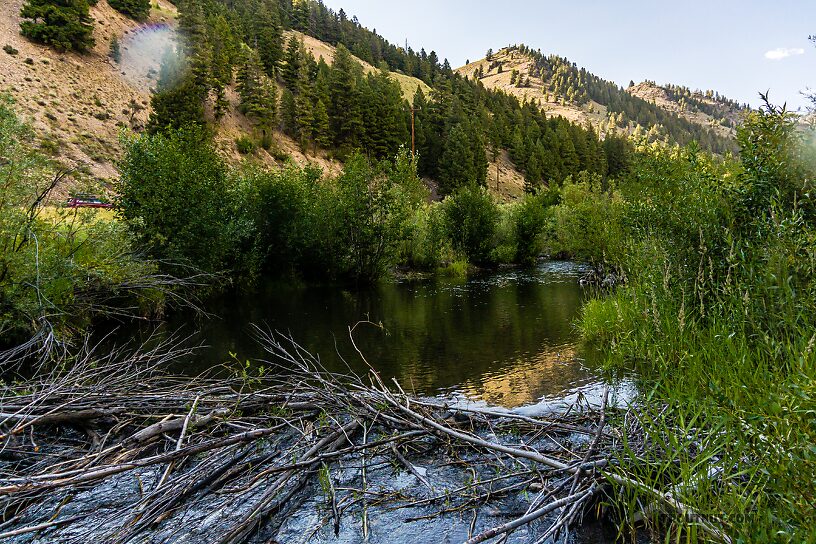
StateIdaho
LocationSquaw Creek
Date TakenAug 4, 2020
Date AddedAug 20, 2020
AuthorTroutnut
CameraNIKON 1 AW1
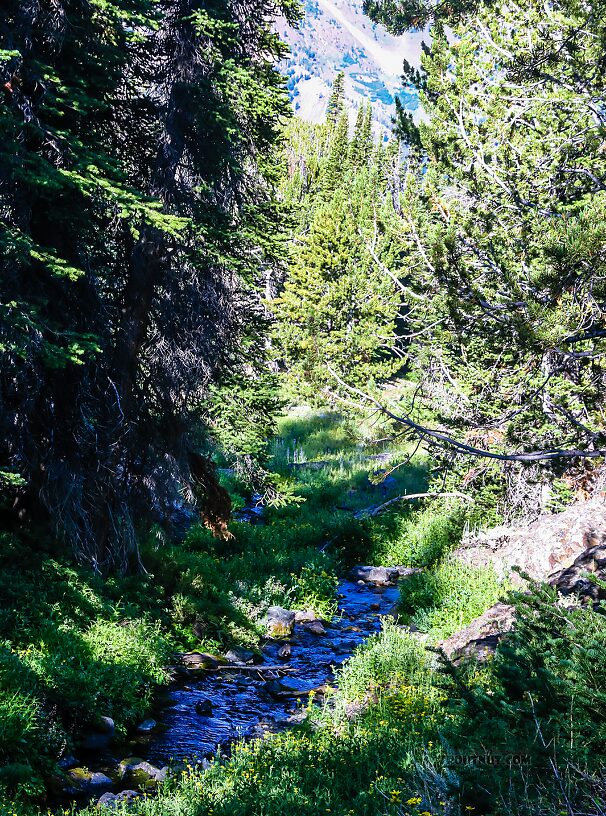
StateIdaho
LocationGreen Lake Outlet
Date TakenAug 4, 2020
Date AddedAug 19, 2020
AuthorTroutnut
CameraCanon EOS 7D Mark II

StateIdaho
LocationGreen Lake Outlet
Date TakenAug 4, 2020
Date AddedAug 19, 2020
AuthorTroutnut
CameraCanon EOS 7D Mark II

StateIdaho
LocationGreen Lake Outlet
Date TakenAug 4, 2020
Date AddedAug 19, 2020
AuthorTroutnut
CameraCanon EOS 7D Mark II

StateIdaho
LocationGreen Lake
Date TakenAug 4, 2020
Date AddedAug 19, 2020
AuthorTroutnut
CameraCanon EOS 7D Mark II

StateIdaho
LocationGreen Lake
Date TakenAug 4, 2020
Date AddedAug 19, 2020
AuthorTroutnut
CameraCanon EOS 7D Mark II

StateIdaho
LocationGreen Lake
Date TakenAug 4, 2020
Date AddedAug 19, 2020
AuthorTroutnut
CameraCanon EOS 7D Mark II
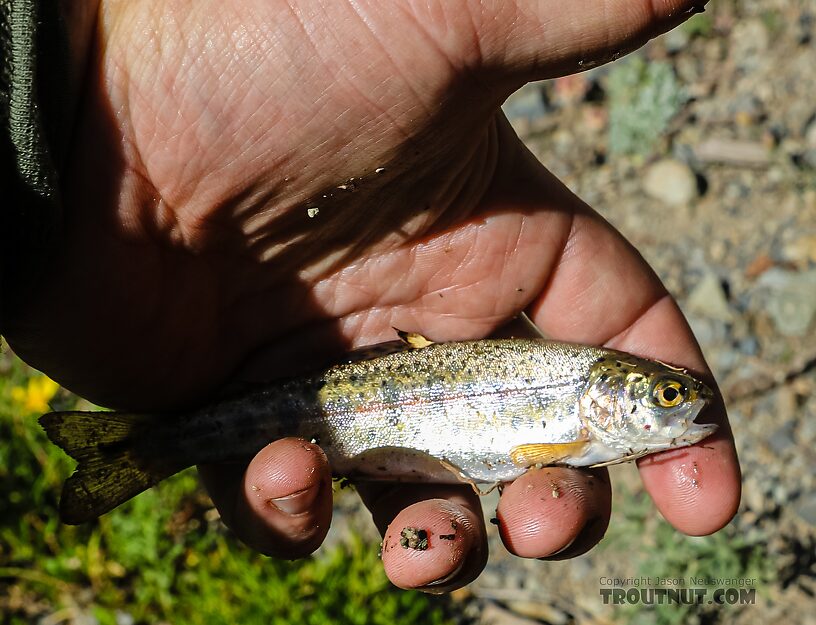
StateIdaho
LocationGreen Lake
Date TakenAug 4, 2020
Date AddedAug 19, 2020
AuthorTroutnut
CameraCanon EOS 7D Mark II

StateIdaho
LocationGreen Lake
Date TakenAug 4, 2020
Date AddedAug 19, 2020
AuthorTroutnut
CameraCanon EOS 7D Mark II

StateIdaho
LocationGreen Lake
Date TakenAug 4, 2020
Date AddedAug 19, 2020
AuthorTroutnut
CameraCanon EOS 7D Mark II
Closeup insects by Troutnut from Green Lake Outlet and Trealtor Creek in Idaho
Baetis bicaudatus (BWO) Mayfly Nymph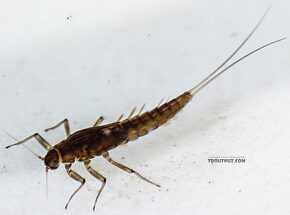 View 5 PicturesHere I'm just copying and pasting, without cleaning up, my notes from spending a long time with this one under the microscope (and keying with Merritt & Cummins 5th Ed) only to end up confirming the most likely guess.
View 5 PicturesHere I'm just copying and pasting, without cleaning up, my notes from spending a long time with this one under the microscope (and keying with Merritt & Cummins 5th Ed) only to end up confirming the most likely guess.
7. Baetis bicaudatus nymph
1. Hind wingpad present but small and hidden beneath forewing pad
2. Segment 2 of labial palp ( Palp: A long, thin, often segmented appendage which can protrude from certain insect mouth parts such as the maxillae. Also known as the < />palpus.) with well-developed medially projecting corner —> Baetis (couple 44)…. BUT no sign of scale-like setae (Seta: Little hairs on insects.) on abdominal terga (Tergum: the dorsal part of an abdominal segment or segments (terga). Also used to describe the entire abdominal dorsum or the thoracic dorsal segments of Odonata.). Conflicts at this couplet.
Palp: A long, thin, often segmented appendage which can protrude from certain insect mouth parts such as the maxillae. Also known as the < />palpus.) with well-developed medially projecting corner —> Baetis (couple 44)…. BUT no sign of scale-like setae (Seta: Little hairs on insects.) on abdominal terga (Tergum: the dorsal part of an abdominal segment or segments (terga). Also used to describe the entire abdominal dorsum or the thoracic dorsal segments of Odonata.). Conflicts at this couplet.
3. Gills on segments I-VII
4. Tarsal claws (Tarsal claw: The claws at the tip of the tarsus, on an insect's "foot.") with denticles (Denticle: Small tooth-like projects, often appearing like serrations on the tarsal claws of certain mayfly nymphs.), seemingly 2 rows but very hard to tell… and the key options with 2 rows don’t make sense
5. Assuming no villipore, we land confidently at couplet 48
6. Leads to Fallceon, except antennal scape doesn’t have robust setae (Seta: Little hairs on insects.)
7. Treated as Baetis, leads to brunneicolor, but McDunnough et al 1932 (Can Ent 64) suggests middle tail should be 5/6 as long as outer ones
8. Keys VERY confidently to couplet 36 in M&C (villipore)
9. If assuming villipore present:
1. 37 —> Scape of anntenae has no distal (Distal: Far from the point of attachment or origin; near the tip.) lobe —> rules out Labiobaetis (100 % certain)
2. 38 —> Terminal filament much shorter than cerci (Cercus: The left and right "tails" of an insect are known as the cerci or caudal cerci. The middle tail of a three-tailed insect is not.) —> not Barbaetis benfieldi (100 % certain)
3. 39 —> Terminal filament reduced (100 % certain)
4. 40 —> Tarsal claw (Tarsal claw: The claws at the tip of the tarsus, on an insect's "foot.") dentical count couplet. If two rows of denticles (Denticle: Small tooth-like projects, often appearing like serrations on the tarsal claws of certain mayfly nymphs.): Either Iswaeon or Heterocloeon. Can’t be Iswaeon because cerci (Cercus: The left and right "tails" of an insect are known as the cerci or caudal cerci. The middle tail of a three-tailed insect is not.) lack dark median band. Can’t be heterocloeon because it’s not in the Platte drainage or in Texas. Thus, it must be one row of denticles (Denticle: Small tooth-like projects, often appearing like serrations on the tarsal claws of certain mayfly nymphs.). Moving on to 42.
5. 42 —> Hind wing pads ( Wing pad: A protrusion from the thorax of an insect nymph which holds the developing wings. Black wing pads usually indicate that the nymph is nearly ready to emerge into an adult.) present (100 % certain)
Wing pad: A protrusion from the thorax of an insect nymph which holds the developing wings. Black wing pads usually indicate that the nymph is nearly ready to emerge into an adult.) present (100 % certain)
6. 44 —> Segment 2 of labial palpi with well-developed medially projecting corner (80 % certain), scale-like setae (Seta: Little hairs on insects.) not evident on terga (Tergum: the dorsal part of an abdominal segment or segments (terga). Also used to describe the entire abdominal dorsum or the thoracic dorsal segments of Odonata.) but maybe limitation of my scope —> Baetis (alternative would be Acentrella, but pronotum (Pronotum: The top of the insect prothorax.) shape is all wrong for those, although not an official characteristic)
7. CONFIDENT in Baetis bicaudatus after distinctive leg markings (J-shaped light mark on first femur ( Femur: The main segment of an insect's leg close to the body, in between the tibia and the trochanter.), L-shaped on second and third) matches original species description to a tee.
Femur: The main segment of an insect's leg close to the body, in between the tibia and the trochanter.), L-shaped on second and third) matches original species description to a tee.
 View 5 PicturesHere I'm just copying and pasting, without cleaning up, my notes from spending a long time with this one under the microscope (and keying with Merritt & Cummins 5th Ed) only to end up confirming the most likely guess.
View 5 PicturesHere I'm just copying and pasting, without cleaning up, my notes from spending a long time with this one under the microscope (and keying with Merritt & Cummins 5th Ed) only to end up confirming the most likely guess.7. Baetis bicaudatus nymph
1. Hind wingpad present but small and hidden beneath forewing pad
2. Segment 2 of labial palp (

The palp on the maxilla of an Ephemerella nymph (detached and photographed under a microscope) is highlighted in red here.
3. Gills on segments I-VII
4. Tarsal claws (Tarsal claw: The claws at the tip of the tarsus, on an insect's "foot.") with denticles (Denticle: Small tooth-like projects, often appearing like serrations on the tarsal claws of certain mayfly nymphs.), seemingly 2 rows but very hard to tell… and the key options with 2 rows don’t make sense
5. Assuming no villipore, we land confidently at couplet 48
6. Leads to Fallceon, except antennal scape doesn’t have robust setae (Seta: Little hairs on insects.)
7. Treated as Baetis, leads to brunneicolor, but McDunnough et al 1932 (Can Ent 64) suggests middle tail should be 5/6 as long as outer ones
8. Keys VERY confidently to couplet 36 in M&C (villipore)
9. If assuming villipore present:
1. 37 —> Scape of anntenae has no distal (Distal: Far from the point of attachment or origin; near the tip.) lobe —> rules out Labiobaetis (100 % certain)
2. 38 —> Terminal filament much shorter than cerci (Cercus: The left and right "tails" of an insect are known as the cerci or caudal cerci. The middle tail of a three-tailed insect is not.) —> not Barbaetis benfieldi (100 % certain)
3. 39 —> Terminal filament reduced (100 % certain)
4. 40 —> Tarsal claw (Tarsal claw: The claws at the tip of the tarsus, on an insect's "foot.") dentical count couplet. If two rows of denticles (Denticle: Small tooth-like projects, often appearing like serrations on the tarsal claws of certain mayfly nymphs.): Either Iswaeon or Heterocloeon. Can’t be Iswaeon because cerci (Cercus: The left and right "tails" of an insect are known as the cerci or caudal cerci. The middle tail of a three-tailed insect is not.) lack dark median band. Can’t be heterocloeon because it’s not in the Platte drainage or in Texas. Thus, it must be one row of denticles (Denticle: Small tooth-like projects, often appearing like serrations on the tarsal claws of certain mayfly nymphs.). Moving on to 42.
5. 42 —> Hind wing pads (

The wing pads on this final instar Baetidae mayfly nymph are extremely dark.
6. 44 —> Segment 2 of labial palpi with well-developed medially projecting corner (80 % certain), scale-like setae (Seta: Little hairs on insects.) not evident on terga (Tergum: the dorsal part of an abdominal segment or segments (terga). Also used to describe the entire abdominal dorsum or the thoracic dorsal segments of Odonata.) but maybe limitation of my scope —> Baetis (alternative would be Acentrella, but pronotum (Pronotum: The top of the insect prothorax.) shape is all wrong for those, although not an official characteristic)
7. CONFIDENT in Baetis bicaudatus after distinctive leg markings (J-shaped light mark on first femur (

The femur of this Isonychia bicolor mayfly spinner is highlighted in red.
Collected August 4, 2020 from Green Lake Outlet in Idaho
Added to Troutnut.com by Troutnut on August 20, 2020
Added to Troutnut.com by Troutnut on August 20, 2020
Onocosmoecus unicolor (Great Late-Summer Sedge) Caddisfly Adult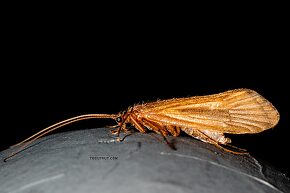 View 11 PicturesOne key characteristic not clearly photographed, but clear in under the microscope: this specimen's midtibiae have 2 apical (Apical: Close to the apex; tip or end.) spurs and 1 preapical spur.
View 11 PicturesOne key characteristic not clearly photographed, but clear in under the microscope: this specimen's midtibiae have 2 apical (Apical: Close to the apex; tip or end.) spurs and 1 preapical spur.
 View 11 PicturesOne key characteristic not clearly photographed, but clear in under the microscope: this specimen's midtibiae have 2 apical (Apical: Close to the apex; tip or end.) spurs and 1 preapical spur.
View 11 PicturesOne key characteristic not clearly photographed, but clear in under the microscope: this specimen's midtibiae have 2 apical (Apical: Close to the apex; tip or end.) spurs and 1 preapical spur.Collected August 4, 2020 from Trealtor Creek in Idaho
Added to Troutnut.com by Troutnut on August 20, 2020
Added to Troutnut.com by Troutnut on August 20, 2020
Male Neoleptophlebia heteronea (Blue Quill) Mayfly Spinner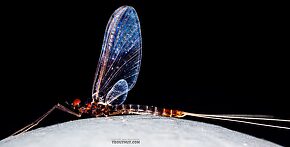 View 10 Pictures
View 10 Pictures
 View 10 Pictures
View 10 PicturesCollected August 4, 2020 from Trealtor Creek in Idaho
Added to Troutnut.com by Troutnut on August 20, 2020
Added to Troutnut.com by Troutnut on August 20, 2020
Drunella coloradensis (Small Western Green Drake) Mayfly Nymph View 6 Pictures
View 6 Pictures
 View 6 Pictures
View 6 PicturesCollected August 4, 2020 from Green Lake Outlet in Idaho
Added to Troutnut.com by Troutnut on August 20, 2020
Added to Troutnut.com by Troutnut on August 20, 2020
Cinygmula (Dark Red Quills) Mayfly Nymph View 5 PicturesThis nymph was one of several mature Cinygmula nymphs collected at the same time as this female dun emerged, so they're probably the same species. Unfortunately there aren't species keys for either stage.
View 5 PicturesThis nymph was one of several mature Cinygmula nymphs collected at the same time as this female dun emerged, so they're probably the same species. Unfortunately there aren't species keys for either stage.
 View 5 PicturesThis nymph was one of several mature Cinygmula nymphs collected at the same time as this female dun emerged, so they're probably the same species. Unfortunately there aren't species keys for either stage.
View 5 PicturesThis nymph was one of several mature Cinygmula nymphs collected at the same time as this female dun emerged, so they're probably the same species. Unfortunately there aren't species keys for either stage.Collected August 4, 2020 from Green Lake Outlet in Idaho
Added to Troutnut.com by Troutnut on August 20, 2020
Added to Troutnut.com by Troutnut on August 20, 2020
Female Cinygmula (Dark Red Quills) Mayfly Dun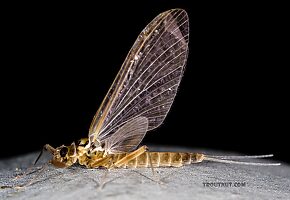 View 4 PicturesThis female dun emerged from a creek loaded with mature Cinygmula nymphs including this specimen, so they're probably the same species. Unfortunately there aren't species keys for either stage.
View 4 PicturesThis female dun emerged from a creek loaded with mature Cinygmula nymphs including this specimen, so they're probably the same species. Unfortunately there aren't species keys for either stage.
 View 4 PicturesThis female dun emerged from a creek loaded with mature Cinygmula nymphs including this specimen, so they're probably the same species. Unfortunately there aren't species keys for either stage.
View 4 PicturesThis female dun emerged from a creek loaded with mature Cinygmula nymphs including this specimen, so they're probably the same species. Unfortunately there aren't species keys for either stage.Collected August 4, 2020 from Green Lake Outlet in Idaho
Added to Troutnut.com by Troutnut on August 20, 2020
Added to Troutnut.com by Troutnut on August 20, 2020
Male Chloroperlidae (Sallflies) Stonefly Adult View 4 PicturesThis specimen unfortunately was blown away by the wind mid-way through the photographs, so I wasn't able to preserve it for an ID or get some of the other angles.
View 4 PicturesThis specimen unfortunately was blown away by the wind mid-way through the photographs, so I wasn't able to preserve it for an ID or get some of the other angles.
 View 4 PicturesThis specimen unfortunately was blown away by the wind mid-way through the photographs, so I wasn't able to preserve it for an ID or get some of the other angles.
View 4 PicturesThis specimen unfortunately was blown away by the wind mid-way through the photographs, so I wasn't able to preserve it for an ID or get some of the other angles.Collected August 4, 2020 from Green Lake Outlet in Idaho
Added to Troutnut.com by Troutnut on August 19, 2020
Added to Troutnut.com by Troutnut on August 19, 2020
Ameletus (Brown Duns) Mayfly Nymph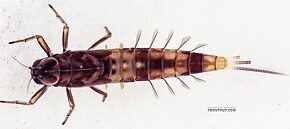 View 6 PicturesI spent (Spent: The wing position of many aquatic insects when they fall on the water after mating. The wings of both sides lay flat on the water. The word may be used to describe insects with their wings in that position, as well as the position itself.) ages trying to identify this one but ultimately couldn't narrow it down to species. I'm guessing it's either a species that has not yet been reported from Idaho or a species with some variation in characteristics not accounted for in the current key (Zloty 1997), which is only for Alberta but happens to contain all the species documented in Idaho except for one (which is rare and only in a different part o the state from this one).
View 6 PicturesI spent (Spent: The wing position of many aquatic insects when they fall on the water after mating. The wings of both sides lay flat on the water. The word may be used to describe insects with their wings in that position, as well as the position itself.) ages trying to identify this one but ultimately couldn't narrow it down to species. I'm guessing it's either a species that has not yet been reported from Idaho or a species with some variation in characteristics not accounted for in the current key (Zloty 1997), which is only for Alberta but happens to contain all the species documented in Idaho except for one (which is rare and only in a different part o the state from this one).
Here are my raw notes from the microscope session:
8. Ameletus nymph (genus 100 % based on mouth parts under microscope)
1. This is probably a species with the nymph either not described yet or not reported in Idaho (or Alberta).
2. There is a key to the species of nymphs in Alberta (Zloty 1997) which includes all but one (A. tolae) of the species listed in Idaho by IDFG (https://idfg.idaho.gov/species/taxa/8607), and A. tolae is only listed from one drainage in north-central Idaho. So my specimen should be in that key. However, it doesn’t fit any of them.
1. The antennae are pale with brown at the apex (Apex: The uppermost, outermost, or culminating point; the tip.). This doesn’t fit any of the species they described.
2. The labrum (Labrum: The platelike structure forming the roof of the mouth of insects; the upper lip.) is almost completely dark brown, maybe a bit paler toward the apex (Apex: The uppermost, outermost, or culminating point; the tip.).
3. Following the key in Zloty 1997 basically rules out every species reported in Idaho except for tolae, which would be outside its range:
1. Couplet 1 : There definitely aren’t strong ganglionic markings on sternites (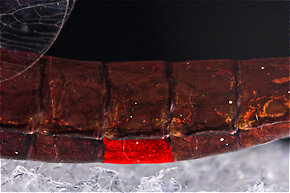 Sternite: The bottom (ventral) part of a single segment on an insect's abdomen.) 2-8 (100 % rules out similior and celer) —> 3
Sternite: The bottom (ventral) part of a single segment on an insect's abdomen.) 2-8 (100 % rules out similior and celer) —> 3
2. Couplet 3 : Posterior (Posterior: Toward the back of an organism's body. The phrase "posterior to" means "in back of.") margins of sternites ( Sternite: The bottom (ventral) part of a single segment on an insect's abdomen.) 6-8 lack large spines (80 % sure) but other characteristics rule out the species if there were spines (validus, oregonensis, subnotatus) —> 6
Sternite: The bottom (ventral) part of a single segment on an insect's abdomen.) 6-8 lack large spines (80 % sure) but other characteristics rule out the species if there were spines (validus, oregonensis, subnotatus) —> 6
3. Couplet 6 : Mesal (Mesal: Toward the middle.) gill extension present, but pretty slim… similar to Fig. 23B or 23G —> 7
4. Couplet 7 : Obviouly gos to 8
5. Couplet 8 : Small size and time of year rules out velox, tergite (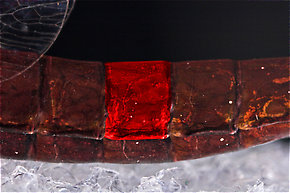 Tergite: The top (dorsal) part of a single segment on an insect's abdomen when it consists of a single chitinous plate (sclerite), or an individual sclerite if the segment has more than one.) patterna and gill shape rules out pritchardi (which is not reported in Idaho anyway). Additional features (antennae, labrum (Labrum: The platelike structure forming the roof of the mouth of insects; the upper lip.) color) rule out a small velox.
Tergite: The top (dorsal) part of a single segment on an insect's abdomen when it consists of a single chitinous plate (sclerite), or an individual sclerite if the segment has more than one.) patterna and gill shape rules out pritchardi (which is not reported in Idaho anyway). Additional features (antennae, labrum (Labrum: The platelike structure forming the roof of the mouth of insects; the upper lip.) color) rule out a small velox.
6. Backtrack to call the mesal (Mesal: Toward the middle.) gill extension “well developed” —> 9
7. Couplet 9 : Tail coloration obviously —> 10
8. Couplet 10 : Supposing it’s a small specimen of a “larger species” leads to 11, in which femora ( Femur: The main segment of an insect's leg close to the body, in between the tibia and the trochanter.) coloration and timing rule out vernalis, and color pattern rules out bellulus. Mesal (Mesal: Toward the middle.) extension on gills from species description very conclusively rules out bellulus. Therefore, calling it a “smaller species” is the correct path —> 12
Femur: The main segment of an insect's leg close to the body, in between the tibia and the trochanter.) coloration and timing rule out vernalis, and color pattern rules out bellulus. Mesal (Mesal: Toward the middle.) extension on gills from species description very conclusively rules out bellulus. Therefore, calling it a “smaller species” is the correct path —> 12
9. Couplet 12 : Sternites ( Sternite: The bottom (ventral) part of a single segment on an insect's abdomen.) without well-defined longitudinal stripe —> cooki. However, tergite (
Sternite: The bottom (ventral) part of a single segment on an insect's abdomen.) without well-defined longitudinal stripe —> cooki. However, tergite ( Tergite: The top (dorsal) part of a single segment on an insect's abdomen when it consists of a single chitinous plate (sclerite), or an individual sclerite if the segment has more than one.) color patterns don’t even come close to matching ANY of the 3 species from this point on (cooki, sparsatus, suffusus). From the species descriptions:
Tergite: The top (dorsal) part of a single segment on an insect's abdomen when it consists of a single chitinous plate (sclerite), or an individual sclerite if the segment has more than one.) color patterns don’t even come close to matching ANY of the 3 species from this point on (cooki, sparsatus, suffusus). From the species descriptions:
1. cooki: Antenna and labrum (Labrum: The platelike structure forming the roof of the mouth of insects; the upper lip.) colors don’t fit. Mesal (Mesal: Toward the middle.) extension should be larger and tracheation lighter, to be this species.
2. sparsatus: Antenna and labrum (Labrum: The platelike structure forming the roof of the mouth of insects; the upper lip.) colors don’t fit. Mesal (Mesal: Toward the middle.) extension should be larger. Postero-lateral (Lateral: To the side.) spines should be very prominent, not barely noticeable.
3. suffusus: Also bad fit to antenna and labrum (Labrum: The platelike structure forming the roof of the mouth of insects; the upper lip.) colors, mesal (Mesal: Toward the middle.) extension, and especially gill tracheation.
 View 6 PicturesI spent (Spent: The wing position of many aquatic insects when they fall on the water after mating. The wings of both sides lay flat on the water. The word may be used to describe insects with their wings in that position, as well as the position itself.) ages trying to identify this one but ultimately couldn't narrow it down to species. I'm guessing it's either a species that has not yet been reported from Idaho or a species with some variation in characteristics not accounted for in the current key (Zloty 1997), which is only for Alberta but happens to contain all the species documented in Idaho except for one (which is rare and only in a different part o the state from this one).
View 6 PicturesI spent (Spent: The wing position of many aquatic insects when they fall on the water after mating. The wings of both sides lay flat on the water. The word may be used to describe insects with their wings in that position, as well as the position itself.) ages trying to identify this one but ultimately couldn't narrow it down to species. I'm guessing it's either a species that has not yet been reported from Idaho or a species with some variation in characteristics not accounted for in the current key (Zloty 1997), which is only for Alberta but happens to contain all the species documented in Idaho except for one (which is rare and only in a different part o the state from this one).Here are my raw notes from the microscope session:
8. Ameletus nymph (genus 100 % based on mouth parts under microscope)
1. This is probably a species with the nymph either not described yet or not reported in Idaho (or Alberta).
2. There is a key to the species of nymphs in Alberta (Zloty 1997) which includes all but one (A. tolae) of the species listed in Idaho by IDFG (https://idfg.idaho.gov/species/taxa/8607), and A. tolae is only listed from one drainage in north-central Idaho. So my specimen should be in that key. However, it doesn’t fit any of them.
1. The antennae are pale with brown at the apex (Apex: The uppermost, outermost, or culminating point; the tip.). This doesn’t fit any of the species they described.
2. The labrum (Labrum: The platelike structure forming the roof of the mouth of insects; the upper lip.) is almost completely dark brown, maybe a bit paler toward the apex (Apex: The uppermost, outermost, or culminating point; the tip.).
3. Following the key in Zloty 1997 basically rules out every species reported in Idaho except for tolae, which would be outside its range:
1. Couplet 1 : There definitely aren’t strong ganglionic markings on sternites (

One sternite of this Isonychia bicolor mayfly spinner is highlighted in red.
2. Couplet 3 : Posterior (Posterior: Toward the back of an organism's body. The phrase "posterior to" means "in back of.") margins of sternites (

One sternite of this Isonychia bicolor mayfly spinner is highlighted in red.
3. Couplet 6 : Mesal (Mesal: Toward the middle.) gill extension present, but pretty slim… similar to Fig. 23B or 23G —> 7
4. Couplet 7 : Obviouly gos to 8
5. Couplet 8 : Small size and time of year rules out velox, tergite (

One tergite of this Isonychia bicolor mayfly spinner is highlighted in red.
6. Backtrack to call the mesal (Mesal: Toward the middle.) gill extension “well developed” —> 9
7. Couplet 9 : Tail coloration obviously —> 10
8. Couplet 10 : Supposing it’s a small specimen of a “larger species” leads to 11, in which femora (

The femur of this Isonychia bicolor mayfly spinner is highlighted in red.
9. Couplet 12 : Sternites (

One sternite of this Isonychia bicolor mayfly spinner is highlighted in red.

One tergite of this Isonychia bicolor mayfly spinner is highlighted in red.
1. cooki: Antenna and labrum (Labrum: The platelike structure forming the roof of the mouth of insects; the upper lip.) colors don’t fit. Mesal (Mesal: Toward the middle.) extension should be larger and tracheation lighter, to be this species.
2. sparsatus: Antenna and labrum (Labrum: The platelike structure forming the roof of the mouth of insects; the upper lip.) colors don’t fit. Mesal (Mesal: Toward the middle.) extension should be larger. Postero-lateral (Lateral: To the side.) spines should be very prominent, not barely noticeable.
3. suffusus: Also bad fit to antenna and labrum (Labrum: The platelike structure forming the roof of the mouth of insects; the upper lip.) colors, mesal (Mesal: Toward the middle.) extension, and especially gill tracheation.
Collected August 4, 2020 from Green Lake Outlet in Idaho
Added to Troutnut.com by Troutnut on August 20, 2020
Added to Troutnut.com by Troutnut on August 20, 2020
Epeorus deceptivus Mayfly Nymph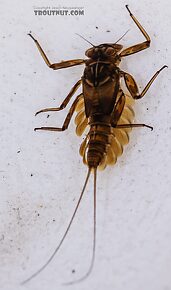 View 4 PicturesIdentification notes from the microscope: Gills on segment 1 extend anteriorly below the body, but not all the way to touching; posterolateral spines minor; femora (
View 4 PicturesIdentification notes from the microscope: Gills on segment 1 extend anteriorly below the body, but not all the way to touching; posterolateral spines minor; femora ( Femur: The main segment of an insect's leg close to the body, in between the tibia and the trochanter.) without fuscous macula.
Femur: The main segment of an insect's leg close to the body, in between the tibia and the trochanter.) without fuscous macula.
 View 4 PicturesIdentification notes from the microscope: Gills on segment 1 extend anteriorly below the body, but not all the way to touching; posterolateral spines minor; femora (
View 4 PicturesIdentification notes from the microscope: Gills on segment 1 extend anteriorly below the body, but not all the way to touching; posterolateral spines minor; femora (
The femur of this Isonychia bicolor mayfly spinner is highlighted in red.
Collected August 4, 2020 from Green Lake Outlet in Idaho
Added to Troutnut.com by Troutnut on August 20, 2020
Added to Troutnut.com by Troutnut on August 20, 2020
Acrididae (Grasshoppers) Grasshopper Adult View 7 Pictures
View 7 Pictures
 View 7 Pictures
View 7 PicturesCollected August 4, 2020 from Green Lake Outlet in Idaho
Added to Troutnut.com by Troutnut on August 20, 2020
Added to Troutnut.com by Troutnut on August 20, 2020
Most recent comments on this post (latest on top)
Comment on this post
Top 10 Fly Hatches
Top Gift Shop Designs
Eat mayflies.
Top Insect Specimens
Miscellaneous Sites
Troutnut.com is copyright © 2004-2024 Jason
Neuswanger (email Jason). See my FAQ for information about use of my images.
 privacy policy
privacy policy

